Civic Pride and Political Devotion: The Relics of Thomas Becket in Siena
Abstract
:A silver tabernacle, circular, covered with certain gold leaf, with a silver base, with nine precious stones, with the coat of arms of the cardinal of San Marcello, to cherish the body of Christ. It housed the relics of Saint Thomas of Canterbury, it weighs five pounds and ten ounces, with a small moon inside.15
A tabernacle gilded with silver, to cherish the body of Christ with certain (gold) leaf and a small cross on top, with nine real precious stones, with a small moon inside, with the arms of the cardinal of San Marcello and with the arms of the Sienese cardinal Piccolomini, it weighs five pounds and six ounces, with glass and two eyes of crystal-glass.16
[…] a silver chest made with crystals and many ornaments, and in it there were various relics of saints, wrapped in silk with inscriptions, that is to sayRelics of Saint Sebastian, with the jawbone of Saint Sebastian.[a piece] Of garment of the Virgin Mary, and of the column where Christ was tied and of the stone of the sepulcher and relics of Saint John the Baptists.Relics of Saint Victor MartyrRelics of Saint Thomas of CanterburyRelics of Saint Julian, and of the martyrdom of Sebastian,Relics of Saint FabianOf garments of the VirginThen there were other uncertain relics and without inscription.41
Funding
Institutional Review Board Statement
Informed Consent Statement
Data Availability Statement
Acknowledgments
Conflicts of Interest
| 1 | For further scholarship into the life of Thomas Becket and his relationship with Henry II, see (Duggan 2004; Urry and Rowe 1999; Barlow 1986; Knowles 1971). |
| 2 | For a comprehensive account of the controversy between Thomas of Canterbury and Henry II, the martyr’s cult in England and its attempted eradication with the establishment of the Church of England, see (Scully 2000). |
| 3 | |
| 4 | (Slocum 2018). |
| 5 | (Nickson 2020). |
| 6 | (Márquez 2021). |
| 7 | |
| 8 | I thank Naomi Speakman at the British Museum for sharing this data with me and discussing the public’s engagement with the Thomas Becket exhibition. Also, see (Frost 2021, p. 79). |
| 9 | For the association of Becket’s cult to the libertas ecclesiae, see (Bottazzi 2011); For the cult of Thomas Becket along the via Francigena, see (Stopani 2004); on the site-specific qualities of Becket’s cult, as well as his devotion in a Guelph versus Ghibelline context, see (Cipollaro and Decker 2013). |
| 10 | Giorgina Pezza, ‘La memoria di San Tommaso di Canterbury nell’Italia settentrionale,’ in (Stopani 2004, pp. 117–42); Renato Stopani, ‘Pulsamus IIII. vicibus, sicut in summis festis. La nascita del culto per San Tommaso Becket a Firenze’ in (Stopani 2004, pp. 143–48); Ambra Garancini, ‘Tra antichi ospedali e antiche strade: geografia e storia del culto di Thomas Becket a Como,’ in (Stopani 2004, pp. 149–58). |
| 11 | Ibid., p. 162. |
| 12 | As far as I am aware, there is virtually no secondary literature that addresses Siena as a recipient of Becket’s cult, nor his relics. The only mention I have found is made in passing by George Kaftal, who in turn refers to Girolamo Gigli’s recording of Becket’s relics in the Chigi chapel during the eighteenth century. For the former, see (Kaftal 1952, p. 989); for Gigli, see n. 42 below. |
| 13 | |
| 14 | The ostensory is described in (Lusini 1939, II, p. 107; Carli 1979, p. 161; Alessi and Martini 1994, pp. 117, 118, cat. 36); it was also recently displayed in the exhibition Masaccio: Madonna del Solletico: L’Eredità del Cardinal Antonio Casini, Principe Senese della Chiesa, 19 May 2021–2 November 2021, Siena. |
| 15 | “Uno tabernaculo dargento tondo con certi fogliami dintorno dorato con basa dargento con gioie nove collarme del cardinale di santo marcello per portare il corpo di christo stavavi dentro lereliquie di sancto tomme di conturbia pesa libr. cinque on. diece co. lunecta dentrovi” (transcribed from original document, my translation), Siena, Archivio di Stato (hereafter: ASS), Opera della Metropolitana 35, fol. 1v; also published by Monica Butzek, in her transcription of the duomo’s inventories, see (Butzek 2012, p. 457, [22]). |
| 16 | “Uno tabernacolo dargiento dorato daportare elcorpus domini confogliame et co. una crociectina dacapo co. nove gioie buone conuna luecta dentro colarme del Cardinale disanmarcciello et Colarme del Cardinale disiena de picolomini pesa £ Cinque et o. sei colvetro con due ochi di Vetro cristallino” (transcribed from original document, my translation), ASS, Opera della Metropolitana 34, fol. 2v; and (Butzek 2012, p. 418, [55]). |
| 17 | Between the delivery of this paper at the Thomas Becket: Life, Death and Legacy Conference in April 2021 and its forthcoming publication, the ostensory in the Sala del Tesoro has been identified with the object described in the 1473 inventory in an article published in May 2021, see (Tavolari 2021, p. 99, n. 11). |
| 18 | The weight of the ostensory shifted between 2.3 and 2.4 kg each time I measured it. The media and weight coincide with the inventories’ descriptions, since 5 lb. 10 oz. and 5 lb. 6 oz. correspond to 2.5 and 2.4 kg, respectively. |
| 19 | The only discrepancy between the ostensory and the object described in the inventories is the number and quality of the stones reported by the sources and the object as it appears today. Both inventories recount nine precious gems, whereas the monstrance today has thirteen. Examining the ostensory reveals that the jewels and craftsmanship of their settings are of very poor quality. Furthermore, the stones are kept in place with threaded fastening, a mechanism that became common in use only with the advent of the Industrial Revolution. This suggests that the original gems were at some point swapped with the current stones. On the history and implementation of nuts and bolts, see (Graves 1984). It is significant that right after Francesco Piccolomini’s death in 1503, two gems were already replaced by false ones, as attested by a marginal note on the sacristy inventory of 1506, see (Butzek 2012, p. 515, [19]). |
| 20 | “LXIII Una pianeta di cianbellotto açurro con fregio brochato a oro conn Angnusdei et raççi nel detto fregio, fodarata di sciamitello verde, con l’arme di misser Chaterino, sengnia sesancta tre, è rotta e stracciata la fodara dello sciamitello verde” (transcribed from Butzek), see (Butzek 2012, p. 313, [LXIII]); the Operaio was the master in-chief of all cathedral works and Caterino di Corsino was the first Operaio to serve a life-long mandate. For a list of the Operai from 1359–1510, see (Aronow 1985, pp. 507, 508). |
| 21 | “Una pianeta di cianbellotto açurro con fregio brocchato d’oro, con Angnusdei et raçi del detto fregio, fodarata di sciamitello, cioè panno lino rosso, sengniata XXXVIIII° 63” (transcribed from Butzek), (Butzek 2012, p. 375, [39]). |
| 22 | On the Piccolomini Altarpiece, see (Caglioti 2005, pp. 387–481); on the Piccolomini library, see (Caciorgna 2008, pp. 148–67; Green 2005, pp. 155–71). |
| 23 | Casini’s will has been transcribed by Machtelt Israëls, who also provides a thorough study into the powerful affiliations and patronage of the cardinal. For the testament, see (Israëls 2003, pp. 205–18). |
| 24 | The letter is transcribed in full and published in ( Lusini 1939, II, p. 107, n. 1). |
| 25 | Ibid. |
| 26 | |
| 27 | |
| 28 | “Pro Sancto Thoma Martyre pulsamus IIII. vicibus, sicut in summis Festis, & preparetur & ornetur eius Altare, & Lampades apponantur, nec non & mirtus, & laurus, si haberet potest, Missamque Populi, & majiorem dicimus ad ejus Altare”. Transcribed from (Moreni 1794, p. 36); also repoted in (Stopani 2004, p. 145; Cipollaro and Decker 2013, p. 135, n. 25); for the original document, see Florence, Archivio dell’Opera del Duomo, MS Ia.3.8., fol. 7r. |
| 29 | |
| 30 | |
| 31 | |
| 32 | |
| 33 | The attempts were unsuccessful, see (Cornelison 1998, pp. 177–79); for Siena’s acquisition of the precious relics of the Baptist, see (Smith 2002, pp. 103, 104). |
| 34 | The date for this inventory is not stated explicitly in the sources; Butzek convincingly dates it to circa 1529, see (Butzek 2012, pp. 599, 600). |
| 35 | Ibid., p. 654, [14]. |
| 36 | For the 1473 inventory, see Ibid. p. 418, [55]; for 1482, p. 457, [22]; for 1506, p. 515, [19]; for 1520, pp. 552, 553 [17]; for ca. 1529, p. 602, [16]. |
| 37 | |
| 38 | |
| 39 | I am grateful to Julian Luxford for our discussion on relics’ appearance and materiality, as well as for bringing this inventory to my attention. “Item, j monstrans of selver and gylt, with the brayns of Seint Thomas of Canterbury” in (Green 1796, II, p. v). |
| 40 | I thank Philippa Jackson for suggesting how the Council of Trent might have prompted the relocation of Becket’s relics. |
| 41 | “Item ostendit quondam capsulam argenteam cum cristallis admodum ornate factam, et in ea aderant variae sanctorum reliquiae sirico involute, cum inscriptionibus, videlicet
|
| 42 | “S. Tommasso di Cantuaria, le cui Reliquie vedonsi nella cappella di Alessandro VII. Alla Metropolitana”. (Gigli 1723, II, p. 548). |
| 43 | The inventories examined range from 1658, just before work begun on Fabio Chigi’s chapel, to 1740, after Gigli’s publication. For that of 1658, see Siena, Archivio dell’Opera Metropolitana di Siena (hereafter: AOMS) 1503 (876). Folios 13r, 13v contain the list of relics in the sacristy and f. 15r, 15v the description of the “Cappella della Madonna Santissima delle Grazie”. No mention of Becket’s relics is made. The following entries refer to the Chigi chapel after its competition. They are: year 1676, AOMS 1505 (877) where the Chigi chapel is described on folios 85v–86v; year 1682, AOMS 1506 (879), 19v–20r; year 1686, AOMS 1508 (880), 29r–29v; year 1710, AOMS 1509 (881), 32r–33r; year 1740, AOMS 1510 (882), 81v–83v. Becket’s relics are absent from all these descriptions. |
| 44 | For instance, see that of year 1676, AOMS 1505 (877), 82v–87v. |
| 45 | (Butzek 1996). For instance, see pp. 171, 172 for two documents with a list of relics that were sent from Rome to Siena to adorn the Chigi chapel. Obviously, Beckets’ relics under examination here could not have come from Rome, as were stationed in Siena. However, this evidence demonstrates the explicit interest of Fabio Chigi in acquiring relics for his chapel. Furthermore, none of these Roman relics are mentioned in the inventories of the Chigi chapel cited in n. 43. Nonetheless, the notable absence of Becket’s remains from the wider correspondence transcribed by Butzek cannot corroborate Gigli’s observation. |
| 46 | |
| 47 | On the monument, see (Connors 2021, pp. 457–67; Antinori 2008, p. 86). |
| 48 | “ALEXANDER VII PONT MAX/NOMINIS ET MVNERIS IN ECCLESIA SVCCESSOR/PONTIFICI TANTO CIVI SVO” Connors, ‘The Alexander III Monument,’ p. 461 and n. 14. |
| 49 | “THOMAM CANTVARIENSEM ANTISTITEM/BERNARDVM CLAREVALLIS ABBATEM/QVOS VIVENTES AMICISSIMOS HABVIT/EDVARDVM ANGLIAE CANVTVM DANIAE REGES/SANCTORVM NVMERO/ADSCRIPSIT” Ibid. |
| 50 | “Reliquiae plurium sanctorum in carta involuta. Sancti Hieronymi, de reliquiis sancti Hieronimi presbiteri, sancti Tomae Certubiae”. (Bossi 2018, p. 121). |
| 51 | “Memoria delle chiese e delle cappelle, che lo Spedale g.de di Santa Maria della Scala di Siena conferisce come compadrone di esse cio è l’ill.ma consulta del medesimo […] Cappella di Sant’ Tommaso di Conturbia nella Terra di Casole dall’anno 1343”. ASS, MS D 113, fol. 25.2r (modern signature mark 38r); and again “Padronati di più Chiese, e Cappelle che conferisce lò Spedale”. Ibid. fol. 66r (modern signature mark 83r); “Cappella di S. Tommaso mart.e di Conturbia nella Pieve di Casole, per il legato fatto da Bindoccio di Puccio da Casole […]”. Ibid. fol. 67r (modern signature mark 84r). This manuscript has been transcribed and published, see (Macchi 2019, pp. 90, 157, 158). |
| 52 | |
| 53 | |
| 54 | (Butzek p. 456, [12]); before the seventeenth century, the precious relics of the Baptists were only stored in the chapel of St. John intermittently, see (Smith 2002, pp. 24–26); for a study of the relics of St. John the Baptist in Siena, see (Grassini 2020). |
| 55 | Siena, Biblioteca Comunale degli Intronati [hereafter: BCI], MS G.V.8.; the Ordo was transcribed and published in 1766 by the abbot of the church of San Salvatore in Bologna, see (Trombelli 1766). During the beginning of the fourteenth century, the canons of the duomo drew up a second version of the Ordo. In this latter manuscript, the description of Becket’s feast day is identical to its prior version of ca. 1215, see Siena, BCI, MS G. V. 9, fol. 12v–14r. I would assume that these liturgical rituals and celebrations remained unvaried until the Reformation. |
| 56 | “Novem lectiones de vita ejus facimus”, (Trombelli 1766, p. 53). |
| 57 | |
| 58 | “Item propter Privilegium, & meritum quorundam aliorum Sanctorum similiter consuevimus cantare ad Vesperum R. in Vigilia eorum, sicut in festo Sancti Thomae Archiepiscopi, & Martyris, Sancti Gregorii Pape, Sancti Benedicti Abbatis, Sancti Augustini Episcopi, Sancti Hieronymi, Sancti Remigii Archiepiscopi, & Sancti Ambrosii Archiepiscopi”. (Trombelli 1766, p. 393). |
| 59 | For instance, the relics of St. Fabian and Sebastian, Ibid., p. 291; relics of St. Cantius, Cantianus, and Cantianilla stored in the high altar, Ibid., p. 326; the body of St. Sabinus kept in his altar, Ibid., p. 376; the head of St. Victor stored in the altar of St. Sabinus, Ibid., p. 325, and so on. |
| 60 | |
| 61 | On these events, see (Rajam 1977, pp. 3–48). |
| 62 | |
| 63 | “E papa alesandro udendo emiracoli di sco tomaso di contorbio/si lo canobizzo”. Ibid., p. 3. For the visual discrepancies between drawing and fresco, see Ibid., pp. 5–7. |
| 64 | Ibid., p. 8. |
| 65 | For a detailed account of this period and Siena’s relations with Gregory XII, see (Terzani 1960). |
| 66 | The fact that what is emphasised in this fresco is the historical parallel rather than the commemoration of an illustrious Sienese native is evident because, throughout the sixteen scenes, Siena never appears and the pope’s citizenship is not referred to, see (Rajam 1977, pp. 207–10); for the historical parallel, see also (Norman 2003, p. 155; Borghini 1983, pp. 226–28). |
| 67 | On Siena’s transition from Ghibelline to Guelph, see (Norman 2018, pp. 21–24). |
| 68 | For Ladislaus’ political and military ambitions, see (Terzani 1960, p. 36). |
| 69 | |
| 70 | Ibid., pp. 1213–216. |
References
- Alessi, Cecilia, and Laura Martini, eds. 1994. Panis Vivus: Arredi e Testimonianze Figurative del Culto Eucaristico dal VI al XIX Secolo. exh. cat. Siena: Protagon. [Google Scholar]
- Antinori, Aloisio. 2008. La Magnificenza e l’Utile: Progetto urbano e monarchia papale nella Roma del Seicento. Rome: Gangemi Editore. [Google Scholar]
- Aronow, Gail S. 1985. A Documentary History of the Pavement Decoration in Siena Cathedral, 1362 through 1506. Ph.D. thesis, Columbia University, New York, NY, USA. [Google Scholar]
- Barlow, Frank. 1986. Thomas Becket. Berkeley: University of California Press. [Google Scholar]
- Borghini, Gabriele. 1983. La decorazione. In Palazzo Pubblico di Siena: Vicende Costruttive e Decorazione. Edited by Cesare Brandi. Milan: Silvana, pp. 226–28. [Google Scholar]
- Bossi, Francesco. 2018. Visita Apostolica alla Diocesi di Siena: 1575. Edited by Giuliano Catoni, Sonia Fineschi, Mario De Gregorio and Doriano Mazzini. Siena: Accademia Senese degli Intronati, 2 vols. [Google Scholar]
- Bottazzi, Marialuisa. 2011. Tomaso Becket nella Basilica di Aquileia: Celebrazione o Propaganda? Mélanges de l’Ecole Française de Rome 123: 561–76. [Google Scholar] [CrossRef]
- Butzek, Monica. 1996. Il Duomo di Siena al Tempo di Alessandro VII. Carteggio e disegni (1658–1667). Munich: Bruckmann. [Google Scholar]
- Butzek, Monica, ed. 2012. Gli Inventari Della Sagrestia Della Cattedrale Senese E Degli Altri Beni Sottoposti Alla Tutela Dell’operaio Del Duomo (1389–1546). Firenze: Edizioni Polistampa. [Google Scholar]
- Caciorgna, Marilena. 2008. Biografia, autobiografia e tradizione classica nella Libreria Piccolomini. In Le pitture del Duomo di Siena. Edited by Mario Lorenzoni. Milan: Silvana, pp. 148–67. [Google Scholar]
- Caglioti, Francesco. 2005. La Cappella Piccolomini nel Duomo di Siena, da Andrea Bregno a Michelangelo. In Pio II e le Arti. La Riscoperta Dell’antico da Federighi a Michelangelo. Edited by Alessandro Angelini. Siena: Cinisello Balsamo, Milan: Silvana, pp. 387–481. [Google Scholar]
- Carli, Enzo. 1979. Il Duomo di Siena. Genova: Sagep Editrice. [Google Scholar]
- Cipollaro, Costanza, and Veronika Decker. 2013. Shaping a Saint’s Identity: The Imagery of Thomas Becket in Medieval Italy. Medieval Art, Architecture & Archaeology at Canterbury 35: 116–38. [Google Scholar]
- Connors, Joseph. 2021. The Alexander III Monument in the Lateran. In Close Reading. Kunsthistorische Interpretationen vom Mittelalter bis in die Moderne. Edited by Stefan Albl, Berthold Hub and Anna Frasca-Rath. Berlin: De Gruyter, pp. 457–67. [Google Scholar]
- Cornelison, Sally J. 1998. Art and Devotion in Late Medieval and Renaissance Florence: The Relics and Reliquaries of Saints Zenobius and John the Baptist. Ph.D. thesis, Courtauld Institute, London, UK; pp. 177–79. [Google Scholar]
- De Beer, Lloyd, and Naomi Speakman. 2021. Thomas Becket: Murder and the Making of a Saint. exh. cat. London: British Museum. [Google Scholar]
- Duggan, Anne. 2004. Thomas Becket. London: Arnold. [Google Scholar]
- Frost, Stuart. 2021. Pandemic, Protests and Building Back: 20 Months at the British Museum. Museum International 73: 70–83. [Google Scholar] [CrossRef]
- Garrison, Edward B. 1993. Studies in the History of Medieval Italian Painting. London: Pindar Press, 4 vols. [Google Scholar]
- Gelin, Marie-Pierre, and Paul Webster, eds. 2016. The Cult of St. Thomas Becket in the Plantagenet World, C.1170–C.1220. Woodbridge-Rochester: Boydell Press. [Google Scholar]
- Gigli, Girolamo. 1723. Diario Sanese. Lucca: Leonardo Venturini, 2 vols. [Google Scholar]
- Grassini, Enrico. 2020. La reliquia del braccio di San Giovanni in Cattedrale. L’utopia della crociata di Pio II. Bullettino Senese di Storia Patria 127: 98–105. [Google Scholar]
- Graves, Frederick E. 1984. Nuts and Bolts. Scientific American 250: 136–38. [Google Scholar] [CrossRef]
- Green, Stratton D. 2005. A fifteenth-century Sienese fabula: The dynastic and patriotic significance of the Piccolomini Library. In Renaissance Siena: Art in Context. Edited by Lawrence Jenkens. Kirksville: Truman State University Press, pp. 155–71. [Google Scholar]
- Green, Valentine. 1796. The History and Antiquities of the City and Suburbs of Worcester. London: Printed for the author by W. Bulmer and Co. and sold by G. Nicol, 2 vols. [Google Scholar]
- Israëls, Machtelt. 2003. Sassetta’s Madonna della Neve. An Image of Patronage. Leiden: Primavera Pers. [Google Scholar]
- Kaftal, George. 1952. Iconography of the Saints in Tuscan Painting. Florence: Sansoni. [Google Scholar]
- Knowles, David. 1971. Thomas Becket. Stanford: Stanford University Press. [Google Scholar]
- Krautheimer, Richard, and Roger Beauchamp Spencer Jones. 1975. The Diary of Alexander VII: Notes on Art, Artists and Buildings. Römisches Jahrbuch für Kunstgeschichte 15: 199–33. [Google Scholar]
- La France, Robert G. 2015. Exorcising the Borgia from Urbino: Timoteo Viti’s Arrivabene Chapel. Renaissance Quarterly 68: 1192–226. [Google Scholar] [CrossRef]
- Lusini, Vittorio. 1939. Il Duomo di Siena. Siena: S. Bernardino, 2 vols. [Google Scholar]
- Luxford, Julian. 2020. The Relics of Thomas Becket. Journal of the British Archaeological Association 173: 124–42. [Google Scholar] [CrossRef]
- Macchi, Girolamo. 2019. Origine dello Spedale di Santa Maria della Scala di Siena: Il ms. D 113 dell’Archivio di Stato di Siena. Edited by Mario De Gregorio and Doriano Mazzini. Arcidosso: C&P Adver Effigi. [Google Scholar]
- Marinangeli, Bonaventura. 1916. Tesori della Basilica e del S. Convento di S. Francesco di Assisi. Il Reliquiario della Pelle di Camoscio. Miscellanea Francescana 17: 92–95. [Google Scholar]
- Márquez, Carles Sánchez, ed. 2021. Arts (St. Thomas Becket in Art: Image, Patronage and Propaganda). Available online: https://www.mdpi.com/journal/arts/special_issues/Thomas_Becket (accessed on 14 October 2022).
- Moreni, Domenico. 1794. Mores et Consuetudines Ecclesiae Florentinae. Florence: Typis Petri Allegrinii. [Google Scholar]
- Nickson, Tom, ed. 2020. Journal of the British Archaeological Association. 173. Available online: https://www.tandfonline.com/toc/yjba20/173/1 (accessed on 14 October 2022).
- Nilgen, Ursula. 2017. Presbyter of Fermo and the Cult of Thomas Becket in the Twelfth and Early Thirteenth Centuries. In The Chasuble of Thomas Becket: A Biography. Munich: Hirmer Verlag GmbH. [Google Scholar]
- Norman, Diana. 2003. Painting in Late Medieval and Renaissance Siena (1260–1555). New Haven: Yale University Press. [Google Scholar]
- Norman, Diana. 2018. Siena and the Angevins (1300–1350): Art, Diplomacy and Dynastic Ambition. Turnhout: Brepols, pp. 21–24. [Google Scholar]
- Rajam, Margaret Tavenner. 1977. The Fresco Cycle by Spinello Aretino in the Sala di Balia, Siena: Imagery of Pope and Emperor. Ph.D. thesis, University of Michigan, Ann Arbor, MI, USA. [Google Scholar]
- Riedl, Peter Anselm, and Max Seidel, eds. 1992. Die Kirchen von Siena: Oratorio della Carità bis S. Domenico. Munich: Bruckmann. [Google Scholar]
- Salvati, Carla. 2005. The Relics of the Stigmata of St. Francis of Assisi. Ph.D. thesis, Concordia University, Montréal, QC, Canada; pp. 104–36. [Google Scholar]
- Scully, Robert E. 2000. The Unmaking of a Saint: Thomas Becket and the English Reformation. The Catholic Historical Review 86: 579–602. [Google Scholar] [CrossRef]
- Slocum, Kay B. 2018. The Cult of Thomas Becket: History and Historiography through Eight Centuries. London: Routledge. [Google Scholar]
- Smith, Timothy B. 2002. Alberto Aringhieri and the chapel of Saint John the Baptist: Patronage, politics, and the cult of relics in Renaissance Siena. Ph.D. thesis, Florida State University, Tallahassee, FL, USA; pp. 124–29. [Google Scholar]
- Stopani, Renato, ed. 2004. Dall’Italia a Canterbury: Culto e Pellegrinaggio Italiano per Thomas Becket. Florence: FirenzeLibri. [Google Scholar]
- Tacconi, Marica. 2005. Cathedral and Civic Ritual in Late Medieval and Renaissance Florence. The Service Books of Santa Maria del Fiore. Cambridge: Cambridge University Press. [Google Scholar]
- Tavolari, Barbara. 2021. Il Pasturale d’Avorio Bianco del Vescovo Antonio Casini. In Masaccio: Madonna del Solletico: L’Eredità del Cardinal Antonio Casini, Principe Senese della Chiesa. exh. cat. Livorno: Sillabe. [Google Scholar]
- Terzani, Tosca. 1960. Siena dalla morte di Gian Galeazzo Visconti alla morte di Ladislao d’Angiò Durazzo. Bullettino Senese di Storia Patria 67: 3–84. [Google Scholar]
- Trexler, Richard. 1980. Public Life in Renaissance Florence. New York: Academic Press. [Google Scholar]
- Trombelli, Giovanni Crisostomo. 1766. Ordo Officiorum Ecclesiae Senensis ab Oderico Eiusdem Ecclesiae Canonicus, Anno MCCXIlI [sic] Composites. Bologna: ex Typographia Longhi. [Google Scholar]
- Urry, William, and Peter A. Rowe. 1999. Thomas Becket: His Last Days. Stroud: Sutton. [Google Scholar]
- Waley, Daniel. 1991. Siena and the Sienese in the Thirteenth Century. Cambridge: Cambridge University Press, pp. 114–26. [Google Scholar]
- Weppelmann, Stefan. 2003. Spinello Aretino’s ‘Canonization of Thomas Becket’ and Trecento Drawing Practice. Master Drawings 41: 3–8. [Google Scholar]
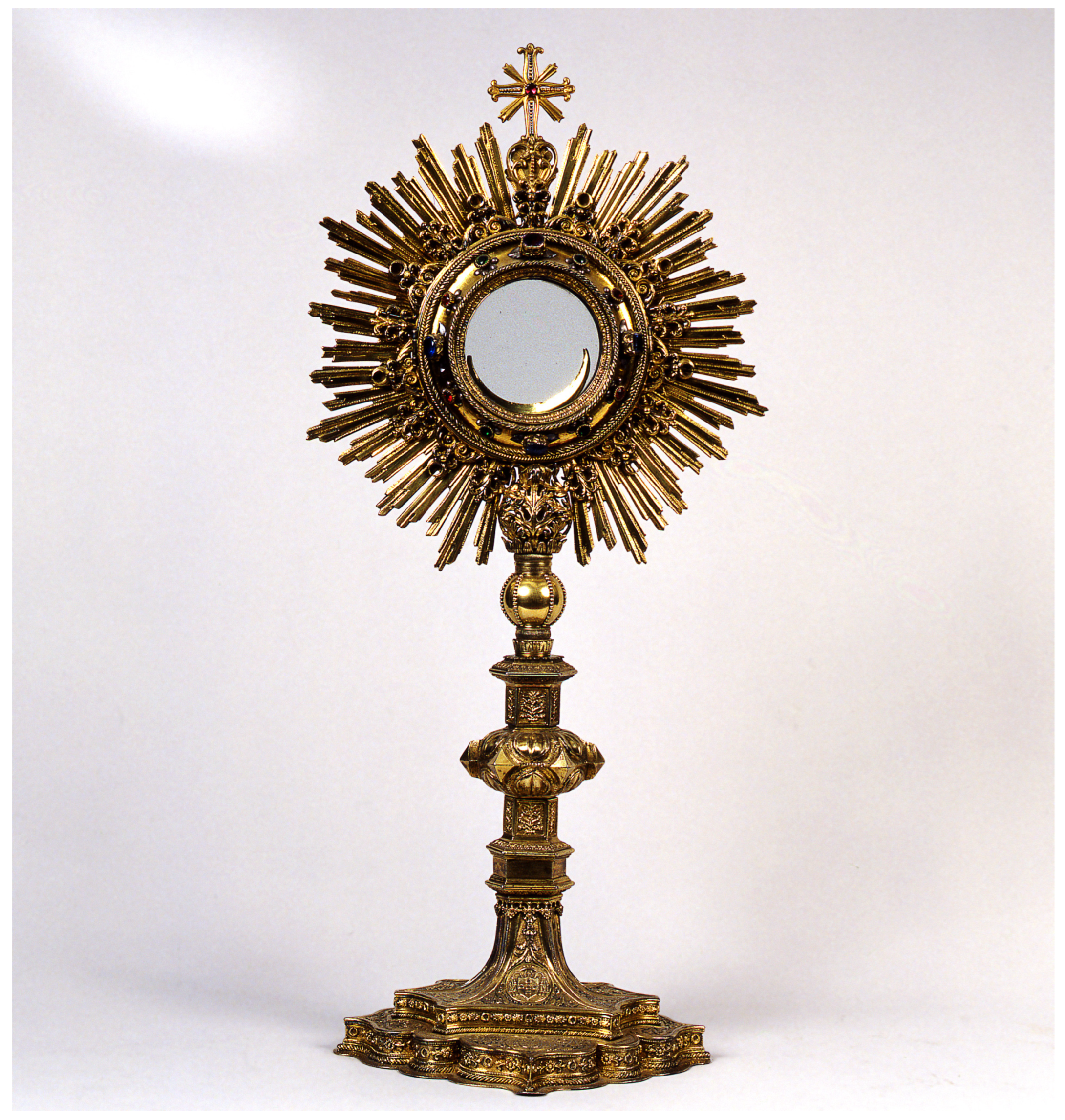
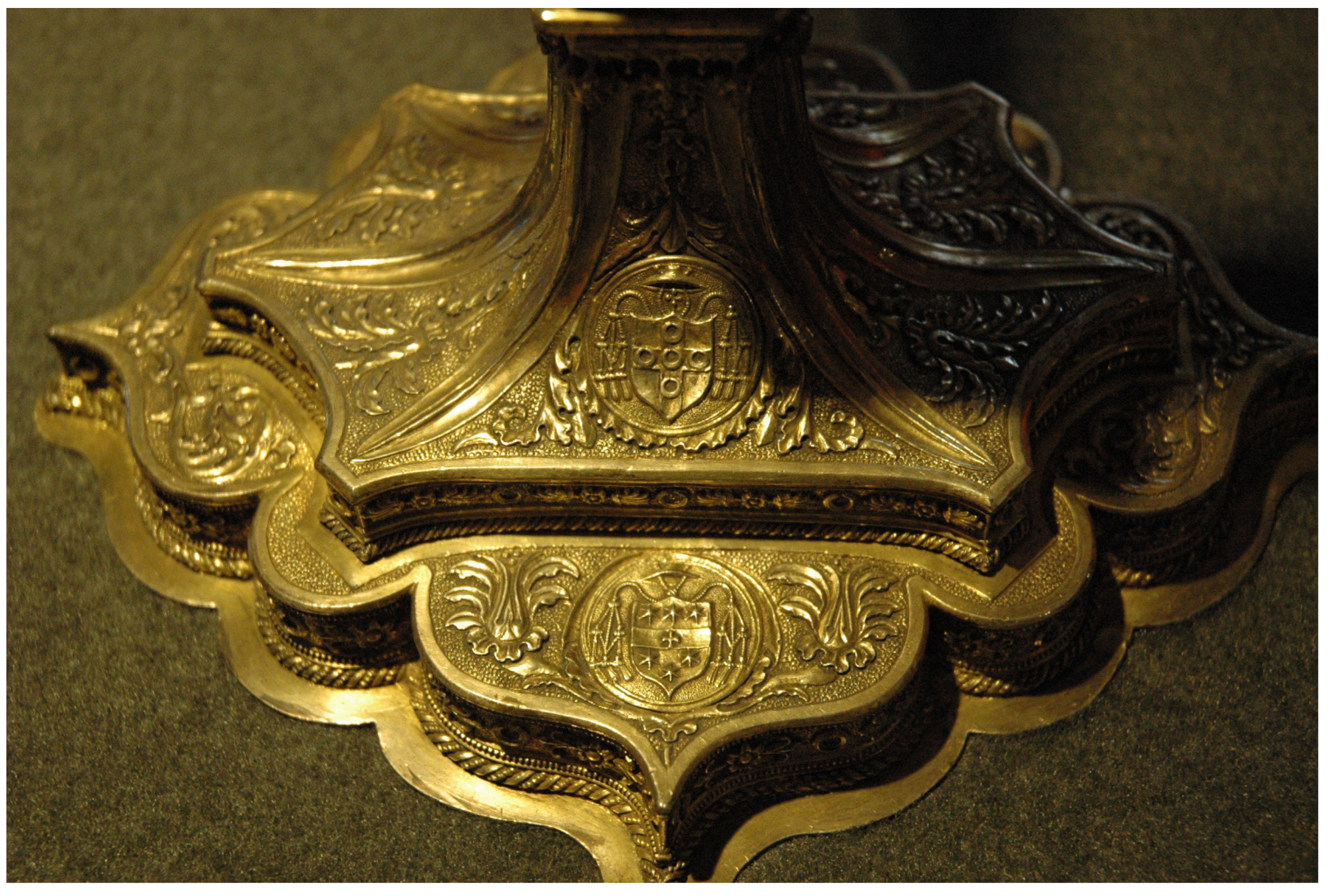
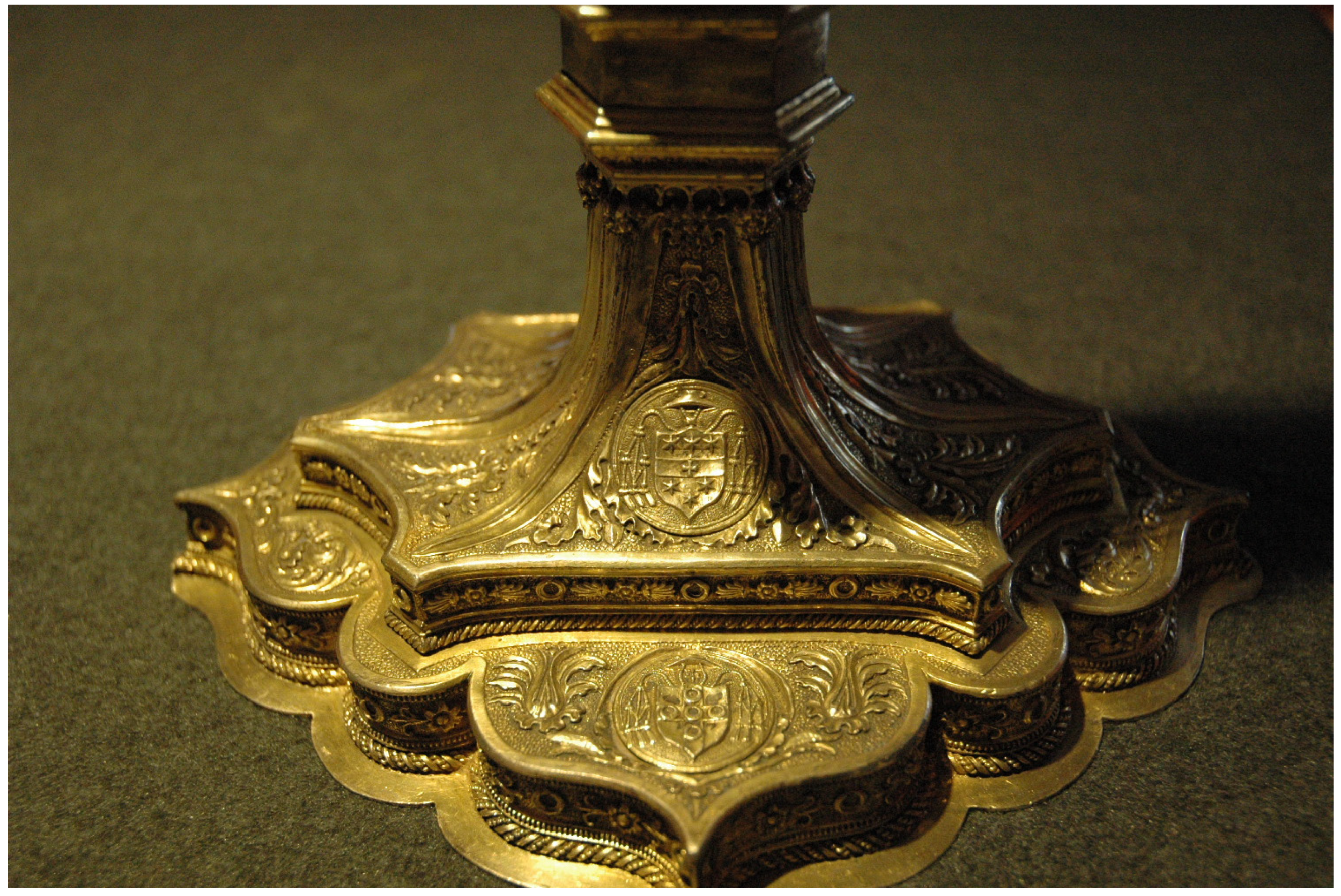
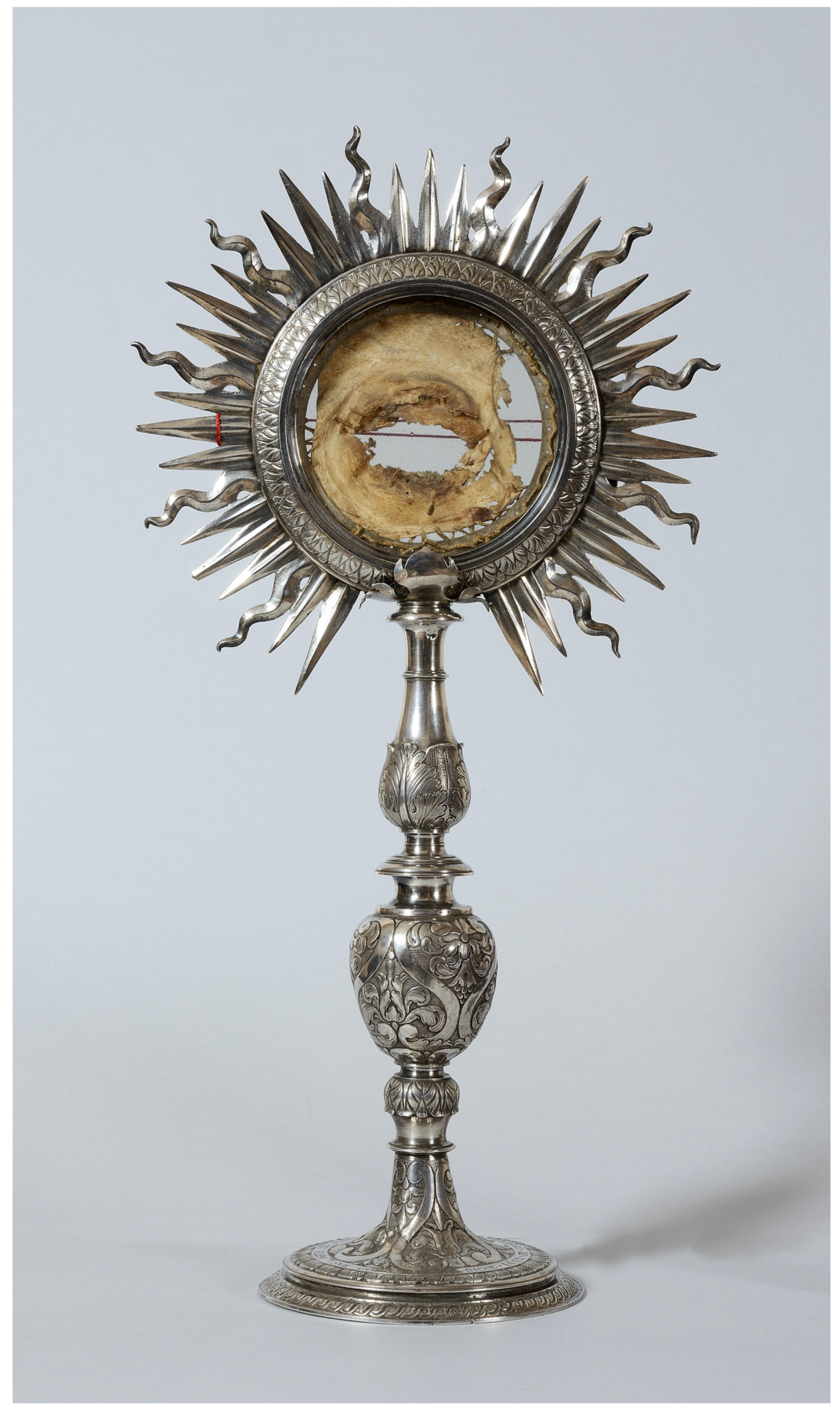
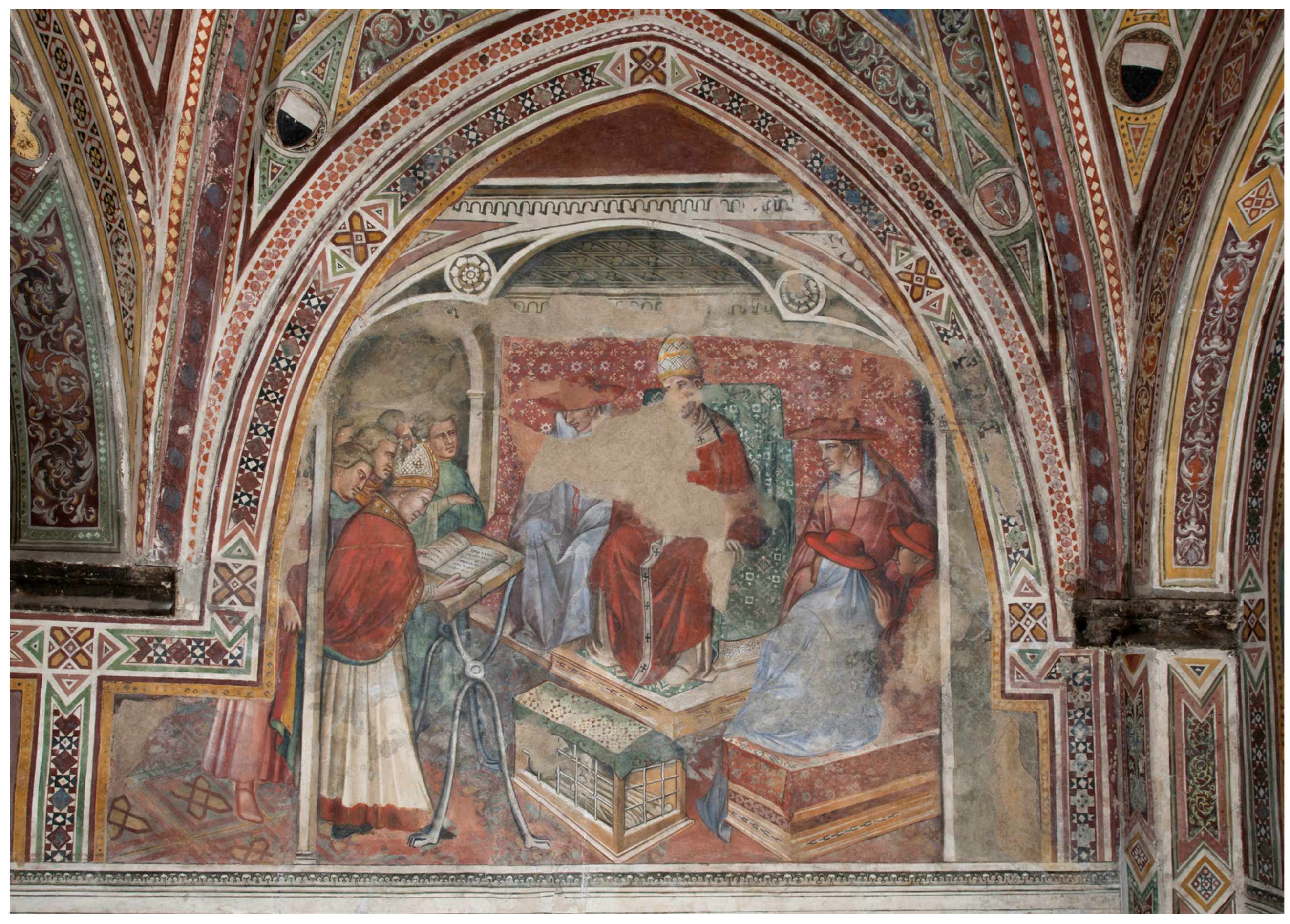
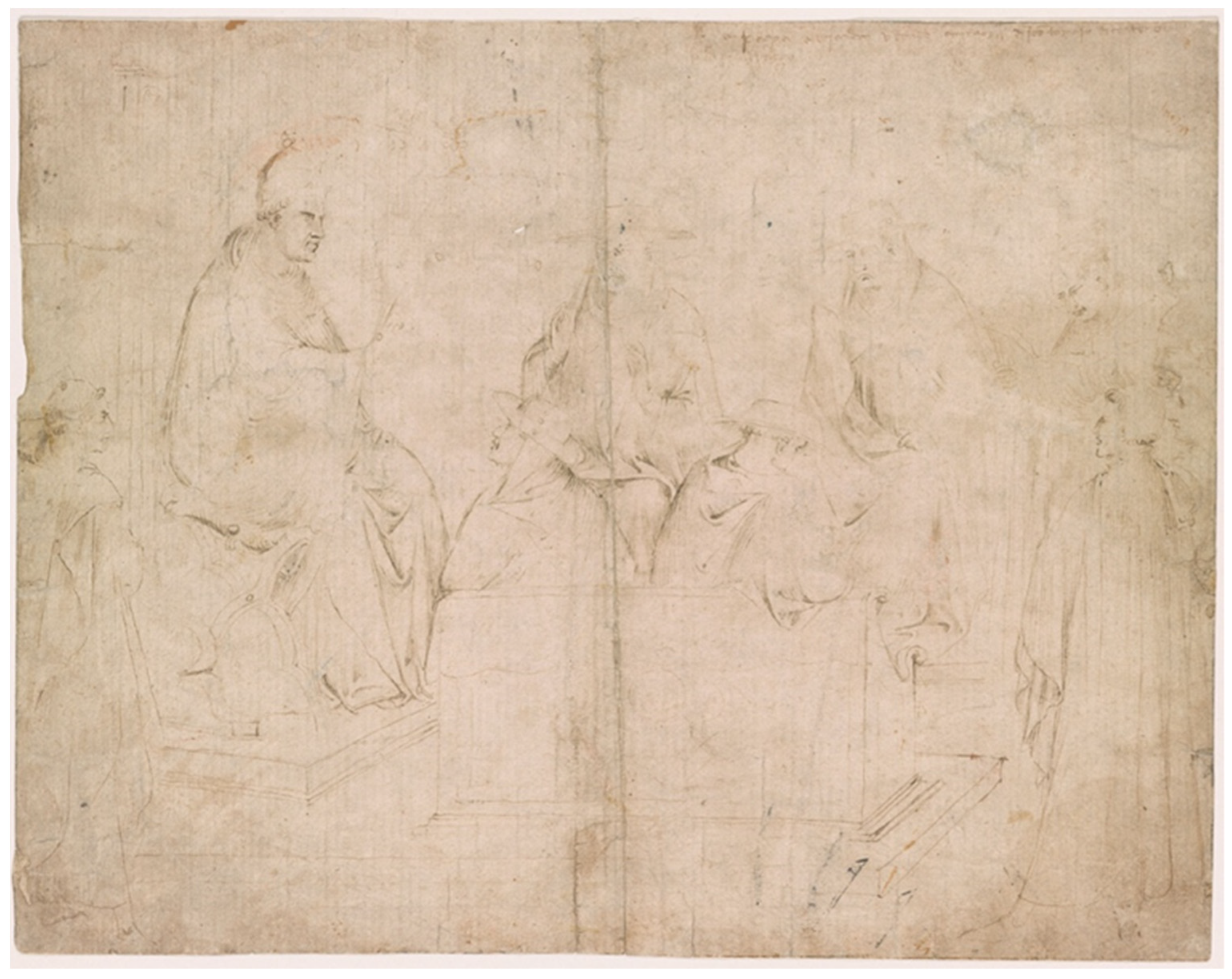
Publisher’s Note: MDPI stays neutral with regard to jurisdictional claims in published maps and institutional affiliations. |
© 2022 by the author. Licensee MDPI, Basel, Switzerland. This article is an open access article distributed under the terms and conditions of the Creative Commons Attribution (CC BY) license (https://creativecommons.org/licenses/by/4.0/).
Share and Cite
Mazzocchio, C. Civic Pride and Political Devotion: The Relics of Thomas Becket in Siena. Religions 2022, 13, 1010. https://doi.org/10.3390/rel13111010
Mazzocchio C. Civic Pride and Political Devotion: The Relics of Thomas Becket in Siena. Religions. 2022; 13(11):1010. https://doi.org/10.3390/rel13111010
Chicago/Turabian StyleMazzocchio, Cecilia. 2022. "Civic Pride and Political Devotion: The Relics of Thomas Becket in Siena" Religions 13, no. 11: 1010. https://doi.org/10.3390/rel13111010
APA StyleMazzocchio, C. (2022). Civic Pride and Political Devotion: The Relics of Thomas Becket in Siena. Religions, 13(11), 1010. https://doi.org/10.3390/rel13111010



